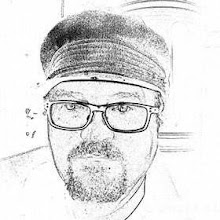All the music in the world is in constant recycling.
Copying music during this tail end of the copyright era is a touchy issue. There was again strong debate how the winning song in the Eurovision Song Contest 2023 was a copy of an Ukrainian pop song.
To put this recent incident in to perspective, here is a story how a famous song ”American Tune” by Paul Simon that has travelled a long and winding way. Hans Leo Hassler´s baroque song (year 1601) https://www.youtube.com/watch?v=s1GQIJqGvP4 found its way ca. 50 years later to e.g. Christmas Oratorio (Matheus Bach) https://www.youtube.com/watch?v=MY-aowxVXfI and also to the German psalm book (e.g. by Paul Gerhardt).
"O Haupt voll Blut und Wundn" travelled for centuries in Europe with numerous variations and became secular at one point of time before it crossed the pond to America. A great credit goes to Tom Glazer who popularized the melody in 1948 that was at time known as an Irish folk song, too.
Soon ”Because All Men Are Brothers” was picked by several folk artists, including Peter, Paul and Mary.https://www.youtube.com/watch?v=HcRGfGFxtFs
Finally Paul Simon made moving lyrics to the melody that my generation learned to know as ”American Tune”. One cannot really say that ”a hit was born”, but an old song was well restored and recycled with respect to earlier generations.
You may take any of the "song paths" on the map above and find how the "lend, steal or borrow" has worked for centuries among composers and music lovers.
So, when you next time hear a familiar melodic pattern, take deep breath, count to ten and enjoy the music. It is not end of the world, but can be ”the beginning of a beautiful friendship”.
Well, as long as music is composed by humans and not by AI … and how would you hear the difference?!
N.b. This was written without AI assistance.



Ei kommentteja:
Lähetä kommentti